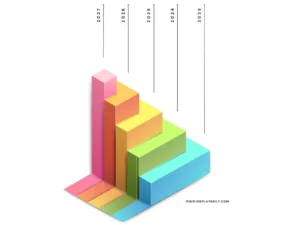The top 10 global original equipment manufacturers (OEMs) decreased their chip spending by 7.6% and accounted for 37.2% of the total market in 2022, according to preliminary results by Gartner, Inc. Global inflation and recession pressures sharply weakened demand for PCs and smartphones in 2022, impacting global OEMs production.
Most of the top 10 semiconductor customers are major PC and smartphone OEMs. “As a result, a sharp drop in consumer demand for PCs and smartphones prevented the top OEMs from increasing unit production and shipments,” said Masatsune Yamaji, Senior Director Analyst at Gartner.
“The zero-COVID policy in China also caused serious material shortages and short-term disruptions to the electronics supply chain. A lingering semiconductor shortage in the automotive, networking and industrial electronics markets, raised chip average selling prices (ASPs) and accelerated semiconductor revenue increases in these markets. Consequently, these factors resulted in the top OEMs decreasing their share of overall semiconductor spending in 2022 from that in 2021.”
All top ten companies in 2021 remained in 2022, with Apple and Samsung Electronics retaining the top two spots. Only Samsung Electronics and Sony increased their chip spending in 2022.
Top 10 Companies by Semiconductor Design TAM, Worldwide, 2022 (Millions of U.S. Dollars)
| 2022 Rank | 2021 Rank | Company | 2022 Spending | 2022 Market Share (%) | 2021 Spending | 2021-2022 Growth (%) |
| 1 | 1 | Apple | 67,056 | 11.1 | 68,851 | -2.6 |
| 2 | 2 | Samsung Electronics | 46,065 | 7.7 | 45,091 | 2.2 |
| 3 | 3 | Lenovo | 21,031 | 3.5 | 25,410 | -17.2 |
| 4 | 5 | Dell Technologies | 18,304 | 3.0 | 20,977 | -12.7 |
| 5 | 4 | BBK Electronics | 18,082 | 3.0 | 21,810 | -17.1 |
| 6 | 6 | Xiaomi | 14,602 | 2.4 | 16,465 | -11.3 |
| 7 | 7 | Huawei | 12,075 | 2.0 | 14,977 | -19.4 |
| 8 | 8 | HP Inc. | 11,291 | 1.9 | 13,927 | -18.9 |
| 9 | 10 | Sony | 7,975 | 1.3 | 6,847 | 16.5 |
| 10 | 9 | Hon Hai Precision | 7,531 | 1.3 | 8,028 | -6.2 |
| Others (outside top 10) | 377,680 | 62.8 | 352,568 | 7.1 | ||
| Total Market | 601,694 | 100.0 | 594,952 | 1.1 |
TAM = total available market
Source: Gartner (February 2023)
Apple remained at the top of the semiconductor spending customer ranking for the fourth year in a row. The company decreased spending on computing microprocessing units (MPUs) by 11.7% due to the continuous shift to having its own in-house-designed application processors. However, Apple increased spending on non-memory chips by 2.8%.
Samsung Electronics increased chip spending by 2.2% and retained the second position. The company gained more market share in the smartphone market due to its leadership in foldable phones, as well as benefiting from the zero-COVID policy in China, which affected its competitors, leading to an increase in spending on semiconductors in 2022.
Sony showed the fastest growth in chip spending in 2022 due to sustained global consumer interest in PlayStation 5 video game consoles. However, production volume could not be raised to meet the level of demand, due to continued serious chip shortages and disruption of logistic networks throughout the year.
Accounting for approximately 25% of semiconductor sales in 2022, memory was the worst performing device category, experiencing a 10% revenue decrease due to plummeting prices in the second half of 2022 amid tepid demand. “The top 10 OEMs accounted for 49.2% of memory spend and consequently saw a significant decline in memory spending,” said Yamaji.

